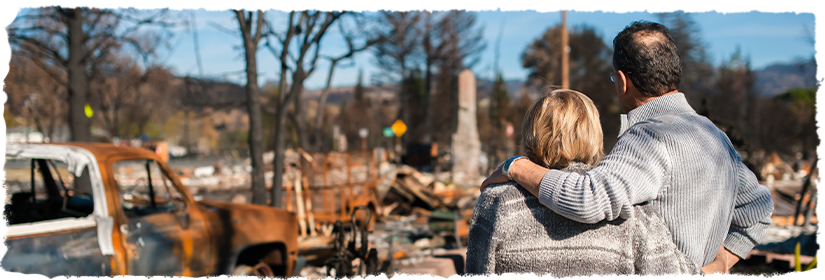Disaster and Social Vulnerability
When disaster strikes, ATSDR is there.

Protecting Socially Vulnerable Communities in Emergencies with GRASP’s CDC Social Vulnerability Index (CDC SVI)
The Geospatial Research, Analysis, and Services Program (GRASP) uses geospatial technology to map different geographies and layers of information and analysis of human populations. Some of that research now feeds the CDC Social Vulnerability Index (CDC SVI), a database of factors which can contribute to the social vulnerability of communities in the United States.
Socially vulnerable populations are less likely to bounce back from natural or manmade disasters, disease outbreaks, or other public health emergencies. For that reason, state and local health department workers and emergency preparedness officials rely on CDC SVI to identify those people in their communities who may need help in preparing for hazards or recovering from a disaster.
CDC SVI applies U.S. census data to its mapping technologies to illustrate the broader effects of an emergency. Users may apply database filters, such as socioeconomic status, minority status, housing type, or transportation to focus on those who may need more support when economic changes result in job loss, financial loss, or lack of social networks.
ATSDR scientists and researchers and our public health partners may download the CDC SVI databases, documentation, and data dictionary at multiple public websites
CDC’s Social Vulnerability Index (CDC SVI) Website
Responding to Public Health Emergencies: Hurricane Response Efforts
GRASP provides geospatial expertise to support a variety of key public health emergency response efforts for CDC/ATSDR including polio, Ebola, measles global outbreaks, e-cigarettes/vaping, Zika virus, outbreaks, and an ammonia chemical release, among others. In FY2019, GRASP worked with 25 different partners on emergency response efforts in CDC, ATSDR, and other efforts outside the agency. Starting in 2003, GRASP has supported ATSDR during hurricane seasons, including Hurricanes Maria, Harvey, and Irma (2017), Michael and Florence (2018), Sandy (2012), Katrina (2005), Frances (2004), and Isabel (2003).
To protect communities against contaminated floodwaters after hurricanes, GRASP modeled flooding in an area based on United States Geological Survey (USGS) near real-time stream level data and terrain models. The model was used to determine if any facilities, such as hospitals or locations that store hazardous materials in the area, might be impacted by flooding. This approach will be part of the CDC Public Health Operations for Emergency Information Integration and Exchange System in the future. GRASP also provided interactive mapping support for Hurricane recovery activities in the US Virgin Islands, and the development of a mobile version of the Environmental Health Shelter Assessment using Survey123 for use by CDC stakeholders in hurricane response.
Return to Stories from the Field Index